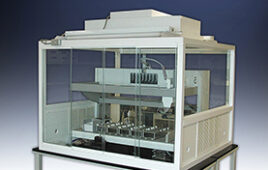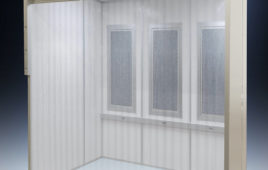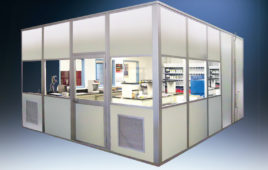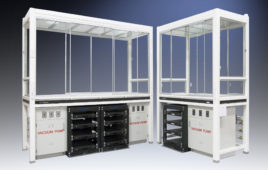Today, when most of us purchase a new electronic device, just about whatever it is, the first thing we do is take it out of the box, plug it in, and start it going. No reading manuals; no watching instruction videos; if a quick start-up guide is included, maybe we’ll take a look at it.
The problem with this plug-and-play mentality is that we can pay a high price for it. We typically do not reference the manual until something goes wrong. Very often at that point, we find out the problem we are now facing could have been avoided with proper equipment maintenance practices — what started out as a minor equipment issue has now become a major repair cost.
When it comes to cleaning equipment, the high price that managers of controlled environments may pay can be very high indeed. This is why they must stress that their cleaning professionals, whether in-house or contracted, properly maintain their cleaning tools. For instance, if airborne dust is released from a poorly maintained vacuum cleaner, it can damage work areas and experiments. Poorly maintained floor machines can do the same as well as possibly damage the floor’s finish or the floor itself. The point is this: plug-and-play is great, and a time saver; but disregard plug-and-maintain when it comes to cleaning equipment at your own peril.
To help cleaning professionals and administrators avoid these pitfalls, below are some common equipment maintenance issues often included in the owner’s manual that get lost in our plug-and-play world.
Vacuum cleaners
Most controlled environment work areas have hard surface floors. If possible, these floors should not be dust mopped. The problem is that dust mopping releases airborne particulates that can land on workstations and other surfaces.
For this reason, high-filtration vacuum cleaners are needed. This can apply to backpack systems, uprights with floor cleaning attachments, or canisters. Whichever system is used, some of the plug-and-maintain items that are all too frequently overlooked include the following:
Cords: The two weakest points of an electrical cord are where it connects to the plug and where it connects to the machine. Typically, these areas weaken due to pulling on the cord. However, this also occurs as a result of the cord rubbing against furnishings or wall corners, or by having been run over by the vacuum. Cleaning professionals and administrators should regularly inspect the entire length of the cord for weak areas, cuts, or frayed wiring. View this as a maintenance and safety issue.1
Vacuum exterior: Vacuum cleaners can take a beating. What happens over time, which is often unnoticed or overlooked, is that handling and mishandling the machine can result in fractures and cracks developing on the machine. Also, latches and connections weaken. The problem here is that even if the machine is a high-filtration system, it can start releasing contaminants through these cracks and connections, essentially destroying the reason for selecting a high-filtration system in the first place.
Filters: In a controlled environment, because air quality is so important, filter bags for vacuum cleaners should be changed as soon as they are half-full. But what are often overlooked are the actual filters. A clogged filter restricts airflow and limits a vacuum’s cleaning performance even if a new bag has been installed. A high-filtration vacuum cleaner will likely have a HEPA filter. These filters should be washed or replaced weekly.2 Where air purity is a major concern, filters and filter bags should be changed not based on how full the bag is but on an hourly basis — for instance, every two to four hours.
Moisture: Administrators and cleaning professionals may not be aware of the fact that moisture can get vacuumed up and collect inside the machine. This can cause soils to cling to the interior sides of the machine as well as to the mechanical components. Often, this happens when mats are vacuumed. However it occurs, it can reduce the lifespan of the vacuum cleaner as well as its effectiveness. Further, mold and moisture can build up, releasing odors and bacteria into the air.

Image: AFFLINK
Floor machines
There are many different types of floor machines. Because of this, we will not be able to discuss all of the equipment maintenance issues that are often overlooked. However, as we will discuss next, many of these matters can be addressed by working with an astute janitorial distributor.
With that said, some plug-and-maintain floor machine issues frequently overlooked include the following:
Water in the machine: If the machine has a recovery tank, it must be emptied after each use. Water left in the tank — for instance, on an automatic scrubber — can cause interior components to rust. This can also happen if the machine is stored in a high-humidity area or where there is poor air circulation, such as in a janitorial closet. This can result in costly repairs. Invariably, proper equipment storage guidelines are included in the owner’s manual … if it were only read.
The machine’s exterior: Just like vacuum cleaners, small cracks can develop at the base of the machine. When we polish floors, we are essentially sanding the top surface of the floor’s finish. During this process, hairline cracks on the machine can release a thin layer of dust into the air.
Clean the squeegee: On an automatic scrubber, a squeegee assembly will be installed at the back of the machine. Often forgotten, these must be rinsed and cleaned after each use. Dirt and soil always collect in these areas. When overlooked, a neglected squeegee will quickly impact the machine’s ability to clean and dry the floor.

Image: AFFLINK
The role of the janitorial distributor
Because we live in a plug-and-play world, we need an experienced janitorial distributor to help us with the plug-and-maintain of cleaning equipment. View them as your guide and advisor. Fortunately, with the purchase of vacuum cleaners and floor machines, some distributors offer customized training as an add-on service, usually at no charge.
Along with teaching administrators and cleaning professionals how to properly maintain these machines, they can also help them select the best types of machines for their specific needs. In some cases, they may have access to online “dashboard” systems that help compare many kinds of machines so administrators and cleaning professionals can select the best machines for their specific needs. This helps eliminate trial-and-error purchasing, which once again points out that the value of a janitorial distributor can never be underestimated.
Footnotes
1. Both cords and plugs are often overlooked. Not only is this a potential safety hazard, but it can also result in an OSHA violation.
2. Not all HEPA filters can be washed; read the owner’s manual.
Michael Wilson is vice president of marketing for AFFLINK, a supply chain optimization company that provides procurement solutions to drive efficiencies in today’s leading businesses. www.afflink.com




